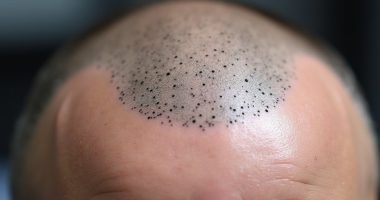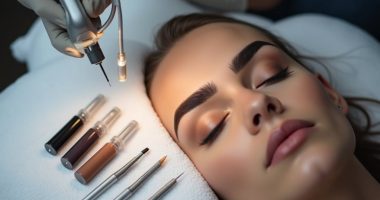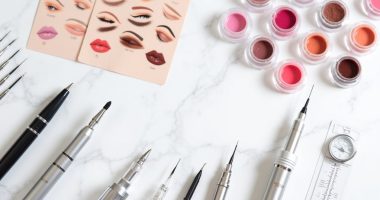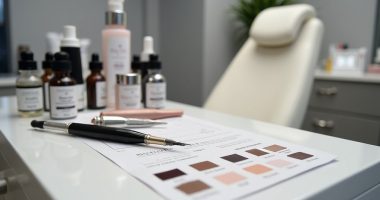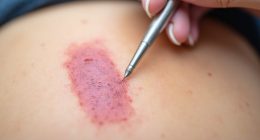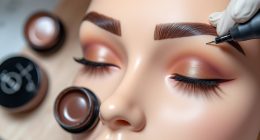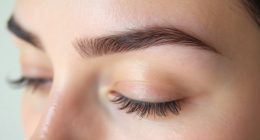Permanent makeup comes with serious baggage. Health risks include infections like hepatitis and HIV from unsterile equipment. Allergic reactions? They happen. Pigments can fade, change color, or interfere with medical procedures like MRIs. Regulation is spotty at best—35% of inks tested by the FDA showed bacterial contamination. Practitioners might have minimal training. The pretty promise of waking up "ready" doesn't always mention these permanent consequences. The details get worse.
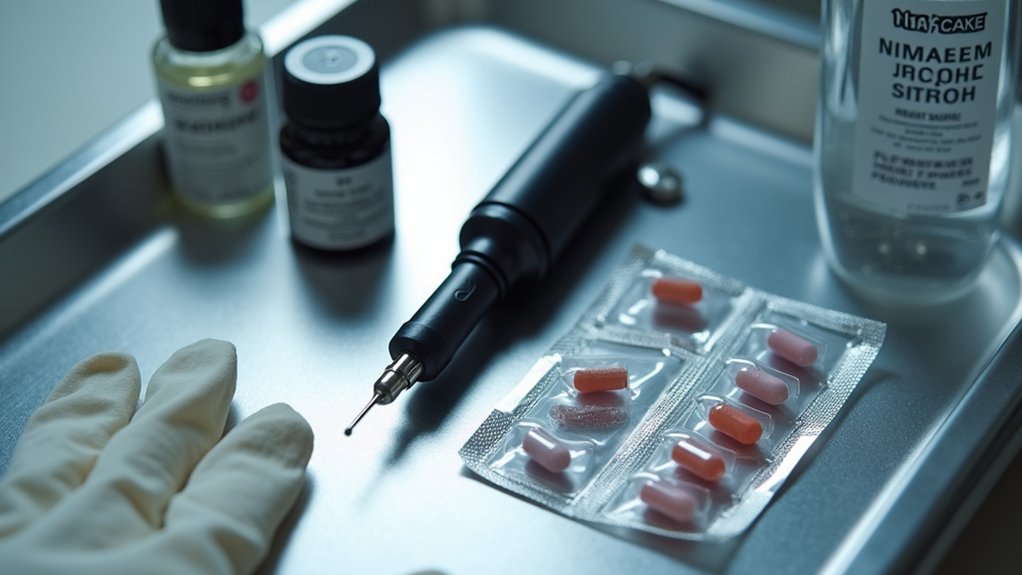
While permanent makeup offers the allure of wake-up-ready brows and perfect eyeliner, it comes with serious risks that many beauty enthusiasts overlook. The health implications are far more extensive than the occasional "oops" moment in traditional makeup application. Infection tops the list, with hepatitis, HIV, and staph all possible contaminants from unsterile equipment. Not exactly the souvenir you want from your beauty treatment.
Permanent beauty comes with permanent risks—infections like hepatitis and staph lurk behind those perfect brows.
Aesthetic concerns plague the industry too—uneven results, color changes, and fading can transform that perfect arch into a permanent disappointment.
Allergic reactions represent another significant danger. Your body might be totally fine with temporary makeup but throw a complete tantrum when permanent pigments enter the scene. These reactions can happen immediately or years later as pigments break down. Surprise! That cute eyeliner could suddenly become an itchy, swollen nightmare. Sun-exposed areas like lips and eyes are particularly vulnerable. Patch testing helps, but it's no guarantee.
Long-term complications make permanent makeup a commitment that rivals marriage. Pigments fade and change color over time—that subtle brown brow might eventually turn an interesting shade of orange or blue. Removal? Extraordinarily difficult. Some pigments even interfere with MRI scans. Talk about a medical inconvenience.
Procedure-specific risks vary by location. Eyeliner procedures risk corneal pigmentation and loss of eyelashes. Lip procedures might trigger herpes outbreaks in susceptible individuals. Charming, right?
The regulatory landscape doesn't inspire confidence either. In the US, regulations vary wildly between states. A shocking 35% of tested inks in an FDA study contained bacterial contamination. Training requirements? Inconsistent at best. Some "professionals" complete a weekend course before wielding needles near your eyes. Despite industry claims, no color additives are actually FDA-approved for injection under the skin for permanent makeup procedures.
Risk reduction starts with thorough research. Licensed practitioners with extensive experience offer the best protection. Sterile environments matter. So does proper aftercare. The 0.2% infection rate might seem small until you're the one with the problem. Always discuss any existing medical conditions with your technician before proceeding to avoid potentially serious complications.
Permanent makeup isn't inherently dangerous when performed correctly. But the combination of bodily invasion, chemical pigments, and variable practitioner skills creates genuine risk. Finding a qualified artist with proper certification is crucial to ensuring the procedure is performed safely and with minimal complications. Beauty has its price—sometimes paid in more than dollars.
Frequently Asked Questions
How Much Does Permanent Makeup Typically Cost?
Permanent makeup isn't cheap, folks. Prices vary wildly based on several cost factors.
Basic procedures run $200-$800. Want fancy eyebrows? That'll be $400-$600. Eyeliner costs $200-$600, while lip color commands $600-$800.
Service comparisons show significant range – microblading averages $597, while nano brows hit $660.
Location matters too. Big city? Bigger bill.
Don't forget those sneaky additional costs – consultations, touch-ups, aftercare kits. They add up. Fast.
Does Permanent Makeup Feel Different From Regular Makeup?
Yes, permanent makeup feels drastically different.
No daily application techniques to fuss with. Unlike traditional makeup that sits noticeably on skin, PMU becomes one with your face once healed.
The sensation comparison? Night and day. Traditional cosmetics can feel heavy, cakey, and uncomfortable—especially in humidity.
PMU just feels like…skin. Your skin. No more makeup running down your face at the gym. No more mascara smudges.
Just wake up looking polished. Simple as that.
Can I Get an MRI With Permanent Makeup?
Yes, you can get an MRI with permanent makeup, but there are some caveats.
MRI safety concerns exist because iron oxide pigments can sometimes react to the magnetic field. Only about 2% of people experience issues – usually just temporary swelling or heating sensations. Nothing dramatic, folks!
Tattoo reactions are rare – fewer than 10 documented cases. Still, tell your technician beforehand.
And maybe wait three months after getting fresh ink. Just common sense.
How Often Should I Touch up My Permanent Makeup?
Touch up frequency varies.
Most permanent makeup needs annual maintenance, but there's no one-size-fits-all schedule.
Oily skin? More frequent visits—every 6-9 months.
Blessed with dry skin? Lucky you. Could stretch to 18-24 months between sessions.
Sun exposure and skincare habits matter too.
Wait for healing after the initial procedure (4-8 weeks) before that first touch-up.
When 50-80% of the pigment fades or definition blurs? Time to book that appointment.
Can Permanent Makeup Be Completely Removed if I Change My Mind?
Complete permanent makeup removal is possible—but not guaranteed. Results vary.
Tattoo fading techniques include laser treatments, saline removal, and chemical solutions. Multiple sessions? Always. The process takes time, patience, and money.
Some pigments (especially red and yellow) resist removal. Deeper placements? Harder to eliminate. Older tattoos? More stubborn.
Location matters too. Eyes, lips, and brows respond differently to removal methods.
Perfect results? Sometimes. Noticeable improvement? Usually. But some residual pigment often remains.


